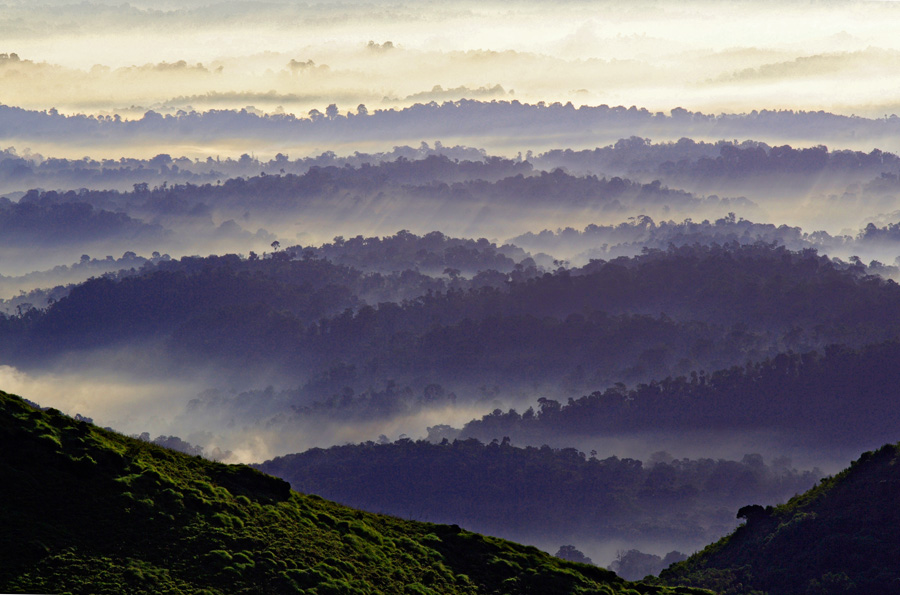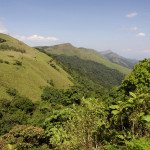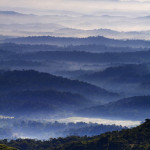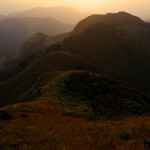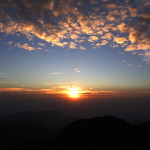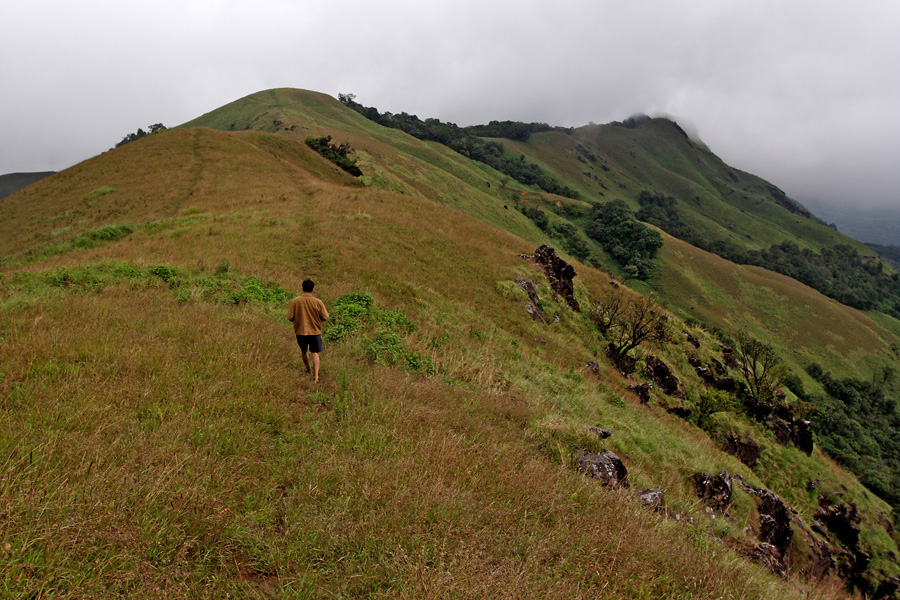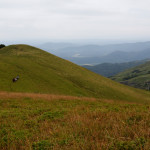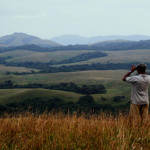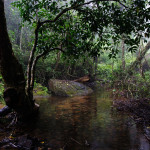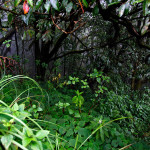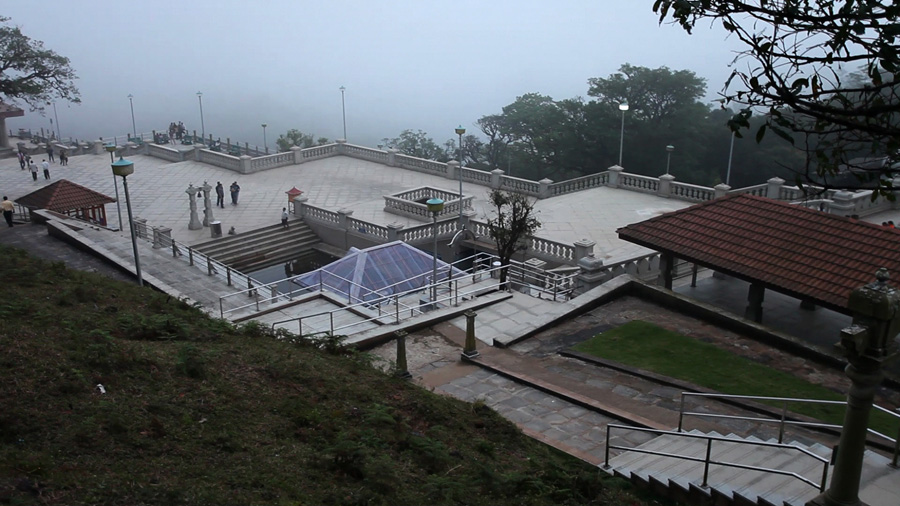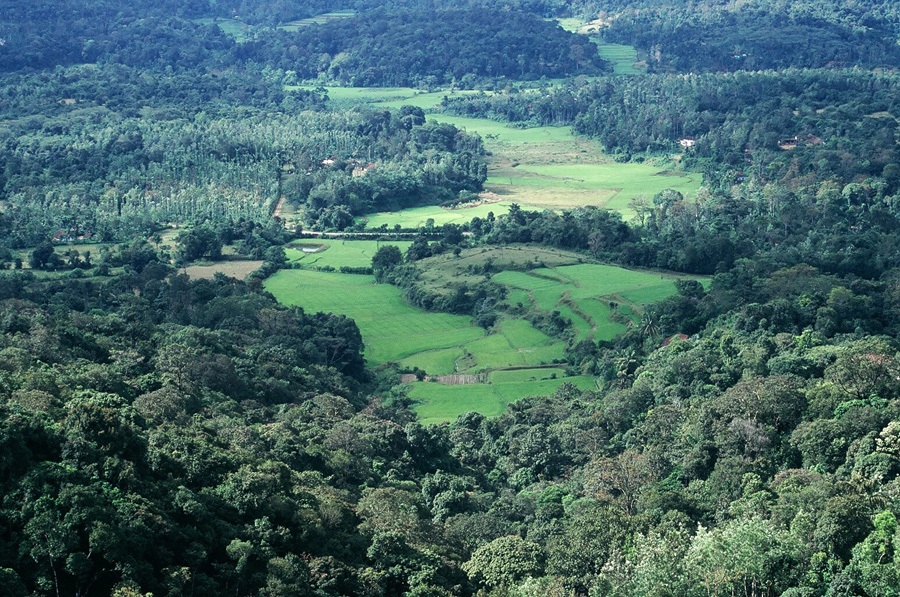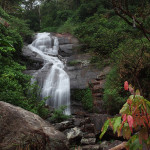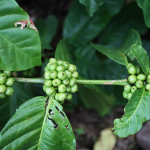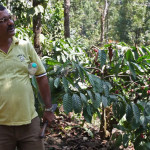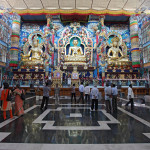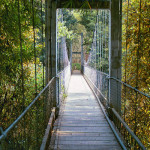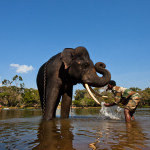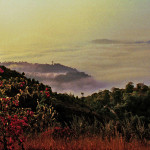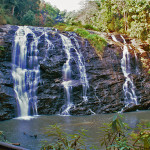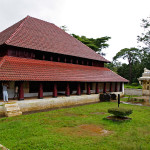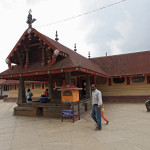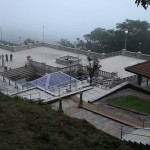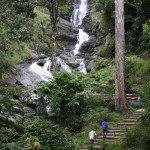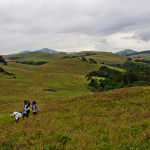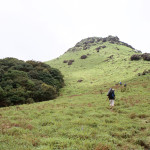Travel to Coorg – Experiences, Places to See and Information
A version of this story was published in a travel magazine four years ago.
No one warned me that the hills can be an addiction impossible to get rid of.
Many years ago, over a long walk in search of grassy meadows and windy peaks high on the hills of the Brahmagiri Ranges, I sweated profusely and dragged my tired legs through the steep slopes that took me past thickly wooded surroundings. With a shoulder tired of a heavy backpack and legs worn out by the trying slopes, I wasn’t exactly in an ebullient mood half way up the journey. I coaxed my uncooperative body to keep going, cursing the hills at the same time for being so steep and testing to its visitors.
Emerging out of the treeline hours later, I was suddenly standing at the edge of a vast stretch of lush grass hugging the undulating slopes, which slowly faded and merged into the hazy sky. The addiction to the hills kicked in that precise moment and has refused to subside ever since. In the years that followed, I tramped up and down these hills as if overpowered by an enchantment that demands me to pay a homage to the slopes at intervals growing more regular every year.
Brahmagiri Ranges, a part of the Western Ghats, are a narrow stretch of hills within the district of Coorg, Karnataka. They run along the southern edge of the district, defining the boundary of Karnataka with Kerala today, but once distinguishing two different cultures to either side of it. Kodavas—the original inhabitants of Coorg—dominated the northern parts and once lived a life that may have been largely isolated, allowing them to develop a culture distinct from their neighbours.
My first brush with the hills happened at Thadiyandamol, the highest peak in the region that offered unrestrained view in all directions. I was told that standing on the peak on a clear day, one can see Arabian Sea faraway to the west, which is a good 100km away by road and perhaps half the distance as the crow flies.
The sea eluded me on my first trek to the peak. Poor weather and low visibility robbed me even from the views of the neighbouring valleys and the mountains beyond. But occasional glimpses through the clearing in the clouds gave me an idea of the picturesque landscapes ahead of me, forcing me to return again and again until my senses were satiated.
In the years that followed, I walked up to the peak of Thadi many times over, seeing its magic in every season and in every kind of weather. The climb was always an effort, but the mountain revealed its moods and unfolded a part of its beauty each time I stepped into the grasslands in the high region.
The summer months were the hardest to climb when the sultry weather and the strong sun sapped all my energies. The mountains too, without rejuvenation from the heavenly showers, looked dull and tired in the mid-day sun. But camping overnight and waiting for the sun to come up next morning, I saw in perfect light, the blue expanse of hills that faded slowly into the morning mist. A series of ridges appeared stacked up like waves raising one above the other, slowly changing colours from a lush green to a gentle hue of blue before eventually merging with the sky.
In the cooler days of winter, the mornings were swallowed by the thick fog that limited my visibility to no more than a few meters. The cold December wind hollered and tortured a lone tree at the peak that bent low and put a brave fight for survival. But in the evening, setting sun painted the thin clouds in patterns of glorious colours varying from deep red to a gentle yellow and made the rolling hills to the west bathe in a golden glow.
In the days of monsoon when Coorg doesn’t see the sun for weeks, fauna of every size and form seemed to confine to their hides, unwilling to brave the pouring rains. The only creatures that danced with joy were the leeches that came alive in the wet season. They waited on the path up the mountain for some easy prey, latching on to the legs of every passerby and sucking blood with glee. However, this was also the time when the flora in the slopes came alive, when tiny white and yellow flowers blossomed amidst the carpet of green grass. The trees dripped continuously and welcomed the pouring rains. The wet slopes fueled the streams that foamed and ran down the hill in full vigour. The faraway ridges remained hidden under the clouds, but every blade of glass was so full of life and invigorating that it infused strength in my body and made the climb tireless.
When I looked for some diversion from the frequent visits to Thadiyandamol, Brahmagiri Peak beckoned me with its rich wildlife and grasslands no less beautiful than Thadi. The trek up began from Irpu Waterfall where all the precipitation on the slopes accumulates and suddenly tumbles down over a rocky wall in the woods. On the way to the peak, I was greeted with an incessant call of birds that hid high in the canopy, but rarely coming out to reveal their dazzling colours. Thick fog hid the mysteries of the forest even during the afternoon hours. The rolling grasslands and shola forest in the higher regions teemed with wildlife. Sambar deer ran away at the slightest hint of our approach. Elephants lazily grazed the fresh grass in the upper slopes. A family of three pachyderms with a young and hyperactive calf always kept a safe distance from us, moving away slowly every time we got a little closer to them. I kept my eyes trained on the endemic lion tailed macaque that proved elusive, but was instead satisfied by the acrobatics of nilgiri langurs.
The climb up the Brahmagiri Peak seemed relatively effortless most of the way until the last few hundred meters, where the mountain raised so steeply, I wondered for a moment if it is even possible to make it to the top. After lumbering up the peak with great difficulty, a small sign greeted me that read, ‘Brahmagiri Wildlife Sanctuary – Altitude 1600m,’ giving an accomplished feeling after the demanding trek.
Standing on the peak and watching the world around me, to the north were the unspoilt, never ending wilderness of the Brahmagiris. To the other side was a more down to earth scene – the village of Tirunelli located on the fringes of the forest, on the banks of Kalindi River. The tiled roofs of the houses in the village distinctly stood out from the greenery of the woods. The bells of Tirunelli temple pierced through the silence of the forest as the puja progressed inside.
While visit to Thadiyandamol and Brahmagiri demanded some effort and struggle, the hills of Talakaveri at the southern edge of the range provided an easier access. Driving up on a winding road, stopping several times on the way for a glimpse of the green expanse below, I reached Talakaveri on a sunny day to see small groups of people walking along the ridges. A perennial spring in Talakaveri marks the origin of River Kaveri, where a small shrine is installed for the river goddess. Every year after the rains subside, Kodavas, the local people, arrive here in large numbers for the month-long Kaveri Sankramana festival.
Kodavas are the original inhabitants of this region who follow unique customs that sets them apart from their neighbours. The once hunting and agrarian community still largely lives off the land, cultivating coffee, spices and paddy.
There are several theories about the origin of Kodava people. A popular speculation suggests that they are the descendants of a small section of the army of Alexander the Great that decided to stay back in India and eventually migrated south to make Coorg as their home. While anthropologists tend to agree that Kodavas are a race distinct from the Dravidian inhabitants of South India, there is no clear understanding about their origins. One more theory proposes that their ancestors belonged to the Indus-Valley Civilization, while another says they may have an Arab descent.
The Kodavas once lived in big ancestral houses inhabited by large joint families. They worship their ancestors and pray to a lamp hanging from the roof in Kanni Kombare, the prayer hall in the ancestral house. Today, even when the members of a Kodava family scatter away from their roots, they tend to congregate in the family house for special occasions and ceremonies.
I was given an introduction to the Kodavas by Prasad Poovanna who ran ‘Palace Estate,’ a home-stay at the base of Thadiyandamol. Prasad is a descendent of the last dewan of Coorg and works actively to preserve the values of Kodavas Community. He proudly showed me a collection of arms handed down from his forefathers, which included a traditional knife called peechekathi that every Kodava once used to sling to his waist. A larger knife, called odikatthi had an ivory handle and was tied to a finely engraved silver chain.
Like most Kodava Families, Prasad and his brothers made a living by growing coffee in an estate at the foot of Brahmagiris. Prakash, the eldest of the three brothers took me on a tour of his estate next morning and baffled me with his knowledge of the plants. As we walked, he would stop and carefully look at a small blade of grass or a leaf. Plucking a leaf, he would ask me to smell or chew. While I was left amused with an aroma or a tangy taste, he would explain in detail about its medicinal values or uses in the kitchen. While I admired his knowledge of the plants, the real surprise came when he lead me to the edge of the plantation where a waterfall suddenly emerged amidst the coffee plants across a bend. A private waterfall in the backyard of the house can be anyone’s dream.
Coorg has always been full of such surprises. Its valleys are occupied by thick woods inhabited by wild elephants. Its canopies are teeming with colourful birds. Streams gush from the depression in the mountains and tumble down, forming tall waterfalls. Its rolling hills seem to extend forever over green undulating expanses.
It is no wonder that I am addicted.
Coorg – Places to Visit and Things to do
Coorg is a large area with plenty of interest to the traveller. It is difficult to see every place in a short visit. Plan your itinerary in advance and decide the location of your accommodation accordingly.
Tibetan Monastery, Bylakuppe.
The small village of Bylakuppe hosts the largest Tibetan settlement in India. Visit the Namdroling Monastery and attend the prayer performed by a large gathering of monks. The monastery has large prayer hall with beautiful decorations and gilded statues of Padmasambhava, Buddha Amitabha and Shakyamuni.
Kaveri Nisargadhama
This small island near the town of Kushalagar has been developed into a recreation center for tourists. The island reached through a pretty hanging bridge across the River Kaveri. While you are there, visit the deer park, go on an elephant ride or play in the shallow waters of the river. Forest department has guesthouses for visitors who would like to stay in the island.
Dubare Elephant Camp
The Karnataka Forest Department takes care of more than a hundred elephants in this elephant care facility on the banks of River Kavery. Jungle Lodges and Resorts, an eco-tourism venture of Government of Karnataka organizes day-visits to the camp where visitors can bathe and feed the elephants.
Raja Seat, Madikeri
The small garden at the edge of Madikeri town offers beautiful views of the misty valleys of Coorg. It is said that King of Coorg used to sit here and watch the setting sun, which explains the name Raja Seat.
Abbi Falls
About 15-minutes away from Madikeri is this waterfall inside a coffee estate. The falls is one of the popular places to visit near Madikeri and usually has water through the year. A hanging bridge in front of the waterfall allows visitors to get a good perspective of the fall.
Kakkabe – Nalknad Palace
About an hour’s drive from Madikeri is the small village of Kakkabe, which was once used as a temporary dwelling of the Kings of Coorg. The Nalknad Palace served as a base for King Dodda Veerarajendra in his fight against Tippu Sultan, while the last king of Coorg Chikka Veerarajendra used this place as a refuge from the British.
Bhagamandala.
In the small village of Bhagamandala where the climb to Talakaveri begins, Kaveri merges with River Kannike. It is believed that a third river Sujyothi emerges from the earth at the point of confluence. Also visit Bhagandeshwara Temple, a stone’s throw away from the confluence.
Talakaveri
At the northern end of Brahmagiri Hills is Talakaveri, the place where River Kaveri originates. A winding road climbing up from Bhagamandala offers panoramic views of the plains below. A temple is built around the small spring, which is the source of Kaveri. A long flight of steps from the temple leads to the top of a hill that offers a 360 degree view of the surrounding hills.
Irpu Falls
At the base of Brahmagiri Peak, River Laxmana Teertha tumbles down from a height of more than 150-feet at Irpu Village. Set in the middle of a thick forest, it is perhaps the most beautiful waterfall in Coorg. The approach to the fall is a short walk through a thickly wooded path.
Trek to Brahmagiri
The trek to Brahmagiri Peak begins from Irpu Falls and takes you up through thickly wooded sections followed by grasslands shola forests. The chances of spotting wildlife is high once you reach the grassland. A log hut serves as a good place to camp and to split the trek into two days. Permissions are required from the forest ranger at nearby Srimangala Village. A guard from forest department will escort you through the trek.
Trek – Thadiyandamol
A four hour climb from Kakkabe Village will take you to Thadiyandamol, the highest peak in Coorg. The climb begins on a tarmac road for the first half hour, which deteriorates into a jeep track and further into a narrow path. Locals say that you can see Arabaian Sea to the west of the peak on a clear day.
Other Activities
While you are in Coorg, it is worthwhile staying at a home-stay or a coffee-estate to experience the warm hospitality of Kodava people. Saunter in the coffee estate and enjoy filter coffee from the beans that grow in the estate when you are back at your host’s house.
Nagarahole National Park and Wayanad Wildlife Sanctuary are located at the edge of Coorg and are a worthy detour if you would like to see elephants in the wild.

